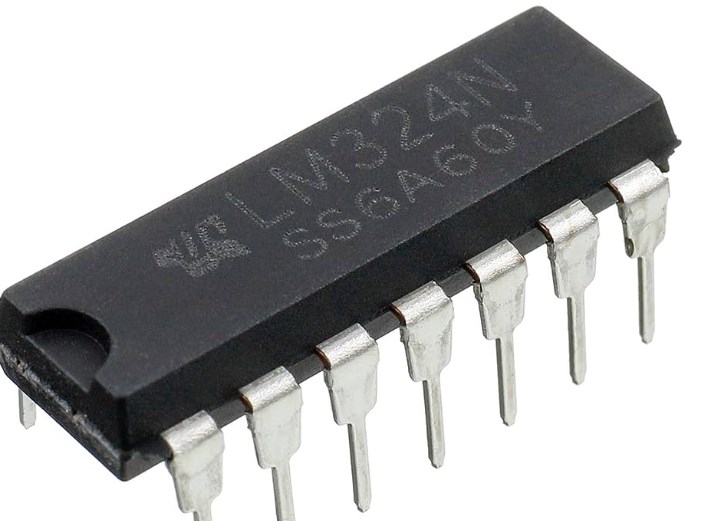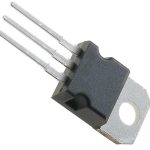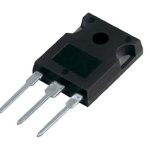Among the various op-amp models available, the LM324N stands out as a versatile and widely used option. Whether you’re an electronics enthusiast or a professional engineer, understanding the LM324N is essential for successful circuit design and implementation.
LM324N
Introduction
The LM324N is an operational amplifier (op-amp) integrated circuit that is widely used in electronic circuits for amplification, signal conditioning, and various other applications. It is part of the LM324 series, which is manufactured by Texas Instruments, a renowned semiconductor company. The LM324N is a quad op-amp, meaning it contains four individual op-amps within a single chip.
Function
The primary function of the LM324N is to amplify and process analog signals. Op-amps are designed to take an input voltage signal and provide an output voltage that is amplified or modified based on the circuit configuration. The LM324N is capable of providing high gain, low distortion, and excellent stability, making it suitable for a wide range of applications in both analog and digital systems.
Features
- Quad Op-Amp: The LM324N includes four op-amps in one package, allowing for multiple amplification stages or multi-channel applications.
- Wide Input Voltage Range: The LM324N can handle a wide range of input voltages, making it suitable for various signal levels.
- Low Power Consumption: It operates at low power, making it energy-efficient and suitable for battery-powered applications.
- High Voltage Gain: The LM324N provides a high voltage gain, allowing for significant signal amplification.
- Wide Supply Voltage Range: It operates with a wide supply voltage range, enabling flexibility in different power supply configurations.
- Low Input Bias Current: The LM324N exhibits low input bias currents, ensuring accurate signal processing and minimizing loading effects on the input source.
- Output Swing: The LM324N offers a wide output voltage swing, allowing for compatibility with various load conditions.
- Internal Frequency Compensation: The LM324N includes internal frequency compensation circuitry, simplifying external circuit design.
Pinout


Datasheet
Click here to get the datasheet document for the amplifier LM324N!
Compare LM324N With Other Models
LM324N vs LM358
One major difference is the number of op-amps integrated into each chip. The LM324N consists of four op-amps, while the LM358 only has two. This means that the LM324N provides more flexibility for multi-channel applications or when multiple amplification stages are required.
Another difference lies in the input and output voltage ranges. The LM324N has a wider input voltage range compared to the LM358, allowing it to handle larger signal swings. Additionally, the output voltage swing of the LM324N is generally higher than that of the LM358.
In terms of power consumption, both chips have similar values, making them suitable for low-power applications. However, it’s worth noting that the LM324N tends to draw slightly more current compared to the LM358.
LM324N vs TL074
Firstly, the TL074 has only one op-amp per chip, while the LM324N incorporates four. This makes the LM324N more advantageous in scenarios where multiple op-amps are required within a single package.
Secondly, the input bias currents of the two chips differ significantly. The TL074 has lower input bias currents, making it more suitable for applications where high input impedance is crucial. On the other hand, the LM324N’s higher input bias currents can be advantageous in certain applications that require a lower output impedance.
Another key difference lies in the bandwidth and slew rate. The TL074 generally offers higher bandwidth and slew rate values compared to the LM324N. This makes the TL074 more suitable for applications requiring faster response times or higher-frequency signals.
LM324N vs LM324aN
The LM324N and LM324aN are essentially the same op-amp model with slight manufacturing variations. The “N” suffix in LM324N represents the standard temperature range, while the “A” suffix in LM324aN indicates an extended temperature range.
The primary difference between these two models is their operating temperature range. The LM324N operates within the standard commercial temperature range of 0°C to 70°C, whereas the LM324aN extends its operational capabilities to a wider temperature range, typically from -40°C to 125°C.
LM324N vs LM324
The main distinction between these two variants lies in their packaging options. The LM324N comes in a DIP (Dual In-line Package) format, which is widely used in through-hole PCB assembly.
The LM324, on the other hand, is available in surface-mount packages like SOIC (Small Outline Integrated Circuit) or TSSOP (Thin Shrink Small Outline Package). Therefore, the choice between these two variants depends on your specific PCB assembly requirements.
LM324N Common Problems
1) Input Offset Voltage
This is a small voltage that appears at the output when there is no input signal. To minimize this problem, use a feedback resistor network to nullify the offset voltage or choose an operational amplifier with lower offset voltage.
2) Input Bias Current
This is the current flowing into the inputs of the amplifier. It can cause inaccuracies in the circuit’s performance. To mitigate this problem, use input bias compensation techniques such as adding resistors or capacitors in parallel with the input pins.
3) Limited Bandwidth
The LM324N has a limited bandwidth, which means it may not be suitable for high-frequency applications. If you need higher bandwidth, consider using a different operational amplifier with a wider frequency response.
4) Output Swing Limitations
The output voltage range of the LM324N may be limited, especially when operating at lower supply voltages. If you require a larger output swing, consider using a rail-to-rail operational amplifier or increasing the supply voltage.
5) Slew Rate Limitation
The LM324N has a limited slew rate, which affects its ability to respond quickly to changes in the input signal. If you need faster response times, select an operational amplifier with a higher slew rate.
How to use LM324N?
1. Pin Configuration
Familiarize yourself with the pinout of the LM324N. It typically comes in a 14-pin DIP (Dual Inline Package), and each pin serves a specific purpose.
2. Power Supply Connections
Connect pins 4 (VCC+) and 11 (VCC-) to your desired power supply voltage. The LM324N can typically operate within a wide range of supply voltages, such as +5V or +/-15V.
3. Input Signals
Connect your input signals to one of the op-amp’s input pins, which are pins 2 (inverting input) and 3 (non-inverting input). The choice of which input to use depends on the circuit configuration and application requirements.
4. Feedback Components
If using the LM324N in an amplifier configuration, connect the necessary feedback components, such as resistors and capacitors, between the output pin (usually pin 1) and the inverting or non-inverting input pins. These components determine the gain and frequency response characteristics of the amplifier.
5. Output Connection
Connect the load or next stage of your circuit to the output pin (commonly pin 1). Ensure proper impedance matching and consider any buffering or amplification requirements for driving subsequent stages.
6. Bypass Capacitor
To improve stability and prevent oscillations, it is recommended to place a bypass capacitor (typically around 0.1μF) between the VCC+ (pin 4) and VCC- (pin 11) pins, close to the IC.
7. Grounding
Connect the ground pin (usually pin 12) to the ground reference of your circuit.
8. Testing and Troubleshooting
Once the connections are made, power up your circuit and test its functionality. Use appropriate test equipment to verify the desired behavior and troubleshoot any issues if necessary.

FAQs
What is the equivalent of LM324N?
The LM324N is part of the LM324 series, and its equivalents include LM324D, LM324AD, and LM324DT. These variants provide similar functionality with slight differences in temperature range, packaging, or other specific features.
What is the normal working voltage of LM324N?
The LM324N typically operates within a wide supply voltage range of 3V to 32V. This broad range allows it to be used in various applications with different power supply configurations.
Is LM324 good for audio?
While the LM324N can be used for audio applications, it may not be the best choice for high-fidelity audio amplification due to its limited bandwidth and potential noise issues. However, for basic audio processing or low-power audio applications, the LM324N can still deliver satisfactory results.
Conclusion
LM324N offers a range of features that make it an excellent choice for many applications. From quad op-amp configuration to its wide input voltage range, the LM324N provides engineers and hobbyists with a reliable and versatile tool for amplification and signal processing needs. By considering its strengths and employing proper design techniques, you can leverage the LM324N’s capabilities to create innovative and efficient electronic circuits.



